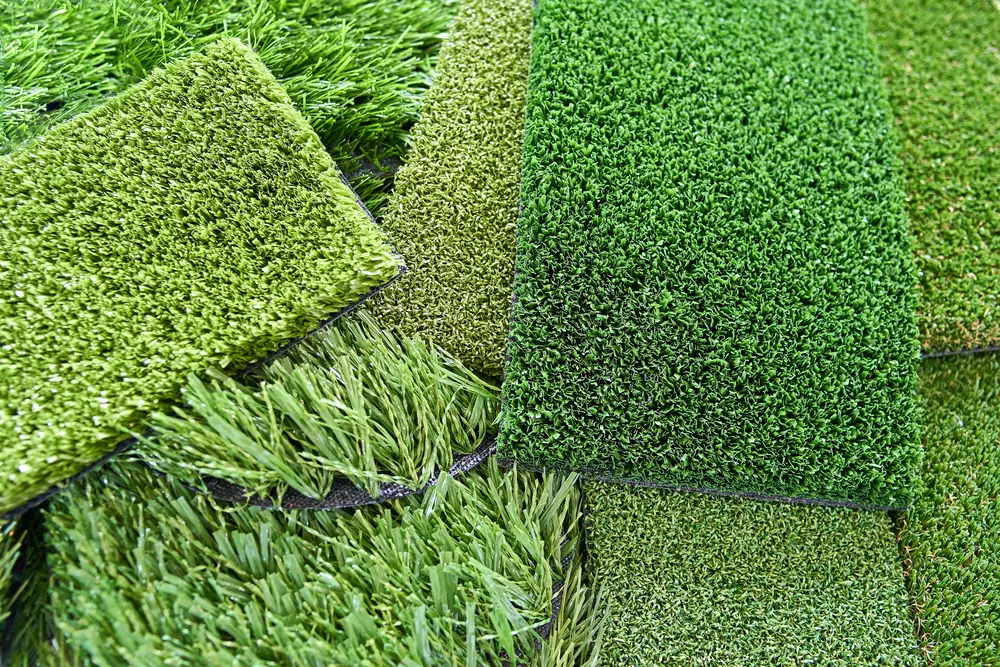Whether artificial grass or natural grass is superior comes down to many factors. Breaking down and understanding those factors is essential to making an informed purchase. So, here’s an in-depth breakdown of artificial grass vs natural grass.
Artificial grass has a higher upfront cost, requires less upkeep and water, and has a higher environmental impact and injury possibility. Natural grass has a higher cost over time, requires more upkeep and water, lasts longer, and has less environmental impact and injury possibility.
In this content you’ll learn:
My Experience With Artificial And Natural Grass
Since I was seven years old, I’ve been cutting, weeding, sowing, and watering grass. That makes it almost 50 years now that lawns have been a part of my life.
From my early days of pushing a rotary lawn mower to cutting lawns seated comfortably on my John Deere lawn tractor, I’ve loved the feel and especially the smell of cut grass.
But times change, and with the advent of artificial grass, I got to develop a whole range of new skills.
15 years ago, I began laying artificial grass on soccer fields and then worked with landscape architects to come up with new and inventive ways of using artificial grass in residential and commercial projects.
Here’s a little of what I’ve discovered working with both natural and artificial grass.
A Brief Overview Of Artificial Grass

Manufacturers make artificial grass, also known as astroturf or synthetic turf, from polyethylene, polypropylene, and nylon. These materials mimic the look and feel of natural grass while offering benefits such as extremely low maintenance, weather resistance, and the ability to withstand heavy foot traffic.
Due to these benefits, especially its durability, artificial grass is an excellent choice for sports fields, stadiums, and commercial landscaping projects requiring a year-round green surface.
A Brief Overview Of Natural Grass
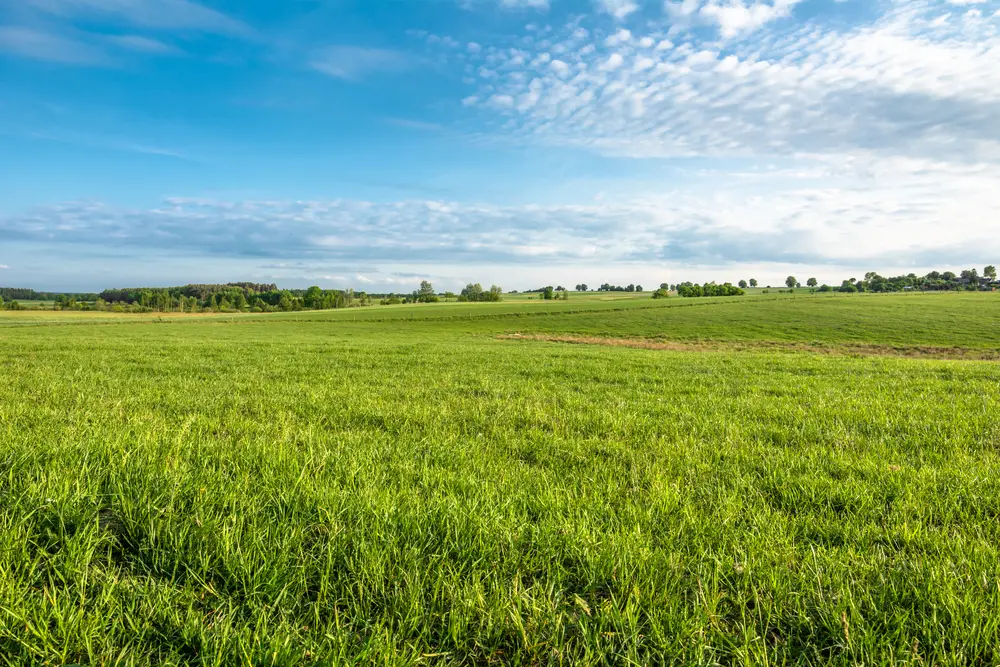
Natural grass is the traditional choice for lawns and sports fields but requires regular mowing, watering, feeding, and maintenance. However, in addition to its natural appearance, real grass has a cooling effect on the surrounding area as well as numerous environmental benefits, including producing oxygen and absorbing water.
Natural grass offers a soft, cushioned surface ideal for various sporting and recreational activities. However, I’ve discovered over the years that natural grass needs constant attention through watering, feeding, pest control, mowing, and trimming.
Artificial Grass Vs Natural Grass
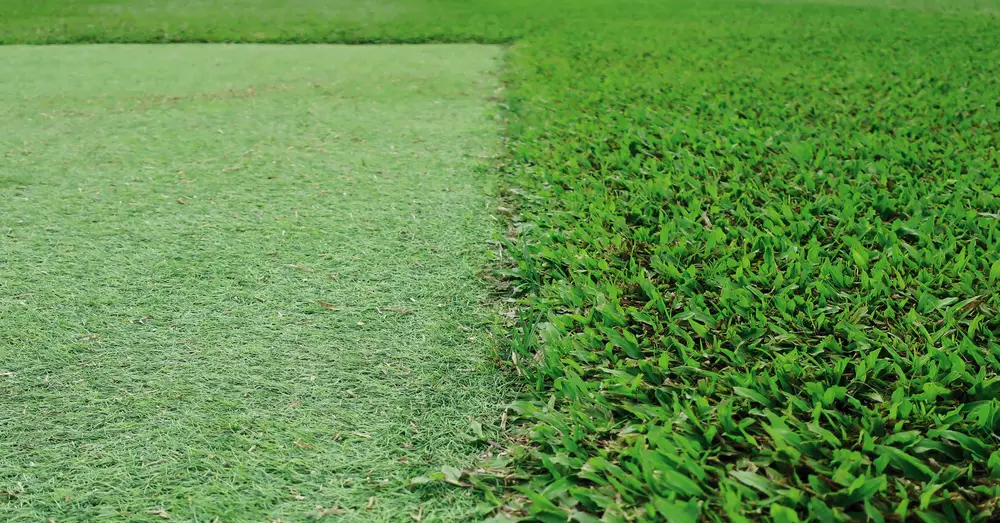
Comparing artificial grass vs natural grass requires analyzing many factors. These include costs, maintenance needs, durability and longevity, watering needs, appearance, environmental impact, and injury possibility.
While all factors are important to consider, we’ll begin with cost as it can determine whether one type of grass is a more viable option than the other.
Cost
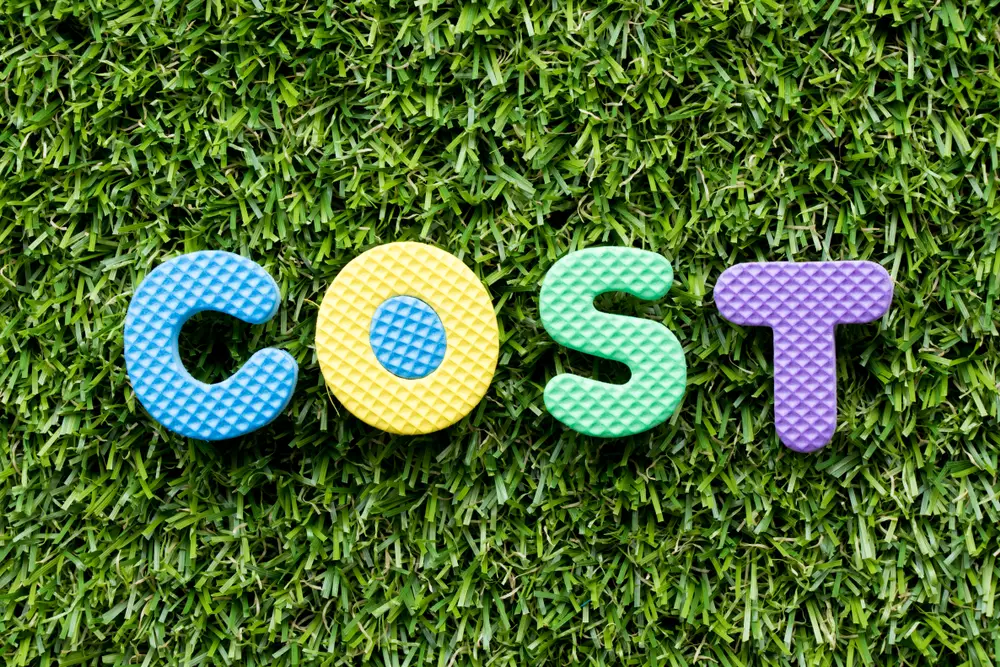
The initial cost of installing artificial grass is much higher than natural grass. Still, due to ongoing maintenance, natural grass’s cost over time makes it more expensive than artificial grass.
A thorough evaluation of the initial investment and long-term expenses is crucial in determining the cost-effectiveness of choosing natural grass over artificial grass.
Installation
Natural grass has an upfront cost of $0.90 to $2 per square foot ($9.68 to $21.50 per square meter).
Artificial grass costs $2 to $8 per square foot ($21.50 to $86 per square meter).
Artificial grass’s higher installation cost comes from various expenses related to materials and labor. This cost includes needing a layer below the soil that allows water to drain away from the artificial grass.
You can install artificial grass yourself to save money. Most larger stores carry artificial grass rolls, tools, and equipment to do so. However, there’s a lot to consider, and a certain level of expertise is required.
Maintenance And Labor
Over time, artificial grass costs less than natural grass. Natural grass has ongoing costs for watering, fertilizing, repairing, reseeding, mowing, pest control, and other maintenance.
Also, most natural-grass sports fields I’ve looked after were in a very poor state of repair at the end of a playing season. They required months of careful attention to get them back into a playable condition, which meant they were not ready for any special or additional events.
All of this also means additional maintenance costs for lawncare equipment as well as any labor.
Expect labor costs to account for a little more than 60% of the total installation price.
Additional Costs
When installing artificial grass in commercial or residential areas, the shape and level of the yard will impact the final installation cost. For example, an installer will need to cut artificial grass to fit unusual shapes, such as pathways and curved gardens. This extends the overall project length and requires more material.
The installer will also have to take any slopes into account. This will require additional time and materials to prepare layers below the soil and prevent grass from sliding downhill.
In addition, removing grass, trees, shrubs, and other plants will add additional costs.
Maintenance

Maintenance is the most critical factor in determining the success or failure of artificial or natural grass.
Artificial Grass
Artificial grass is low maintenance. It does not require mowing, watering, fertilizing, or additional maintenance required by natural grass.
You just need to brush off or remove dirt and debris and brush infill (grains placed between artificial grass blades to help them stay upright) back into place. You may need to occasionally rinse the surface to remove stains and bodily fluids.
Also, you can wash down artificial grass with a light detergent to remove bacteria.
Natural Grass
You’ll need to routinely cut natural grass to the correct height, whether that’s for a sports field, commercial area, or home lawn. You’ll also need to routinely water and fertilize the grass based on the grass’s condition and climate it’s in.
Weeding is another burden on time and cost. Pest control is as well.
Durability And Longevity
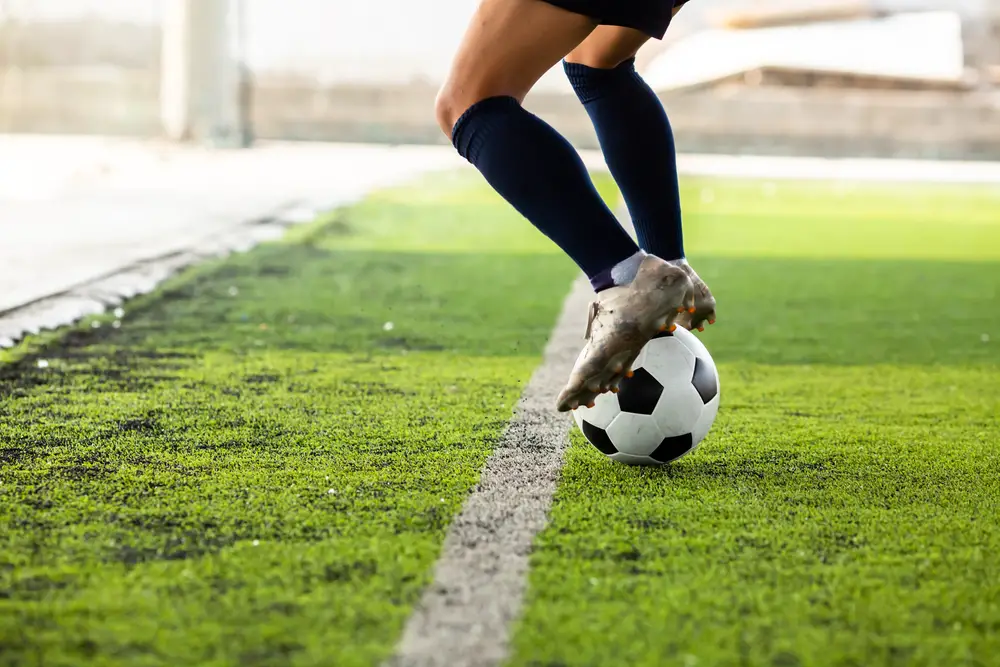
Artificial grass lasts between 10 and 20 years, depending on its level of use and construction.
Manufacturers design artificial grass to withstand heavy use, resist wear and tear, and endure harsh weather conditions. This is all with very little maintenance.
Natural grass can last as little as a few years before requiring reseeding or replacement. But with the proper care and attention, natural grass can flourish and last for decades.
Natural grass can and does:
- Suffer damage from foot traffic, weather, and pests
- Require frequent maintenance, including mowing and watering
- Require monthly fertilization and bi-monthly aerating (creating holes in the soil to allow water and nutrients to reach grass roots)
- Need repair through reseeding (putting down more grass seed) or sodding (replacing damaged grass with pre-cut strips of rolls of grass)
Reseeding takes time, and a playing field may be unusable for months to allow it to recover. Sodding reduces this time, allowing sports fields to be immediately ready for use. However, the sodded areas cannot withstand aggressive use and may need further replacing as they become dislodged.
In landscaping, seeding is the cheaper option. Sodding is usually not necessary.
Watering Needs

Artificial grass and natural grass have different needs when it comes to water. It’s another crucial factor in determining the kind of grass you want.
Artificial Grass
Artificial grass eliminates the need for regular watering, as the field or lawn retains its color and appearance without it.
With artificial grass, you can say goodbye to dragging out the sprinklers, adjusting watering schedules, and worrying about wasting water as you do with natural grass.
Artificial grass also contributes to water conservation efforts. It reduces the impact of lawns and sports fields on local infrastructure required in water-scarce areas of the country.
Artificial grass makes more sense in areas suffering from water scarcity or warmer climates, as it uses a tiny fraction of the water required for natural grass.
Natural Grass
Natural grass requires regular watering to stay green and healthy. The amount of water used to maintain its appearance and health depends on the type of grass and soil conditions. Sandy soils retain less water and require additional watering, while soils with high clay contents and loamy soil (a mix of sand, silt, and clay) retain water better.
The local climate also affects watering schedules, while regional water restrictions can devastate your grass if it interferes with the amount of water your grass requires. Not only will a lack of water affect the color of your grass, but it will also affect its ability to withstand foot traffic and ultimately shorten its lifespan if deprived of water for too long.
Natural grass can drain water resources significantly, with many residential areas attributing most of their water usage to lawns.
Maintaining vast natural grass areas, such as sports fields or large-scale landscapes, can further exacerbate water demand. This increased water usage strains local water supplies and contributes to water scarcity concerns, particularly in water-stressed regions.
Appearance
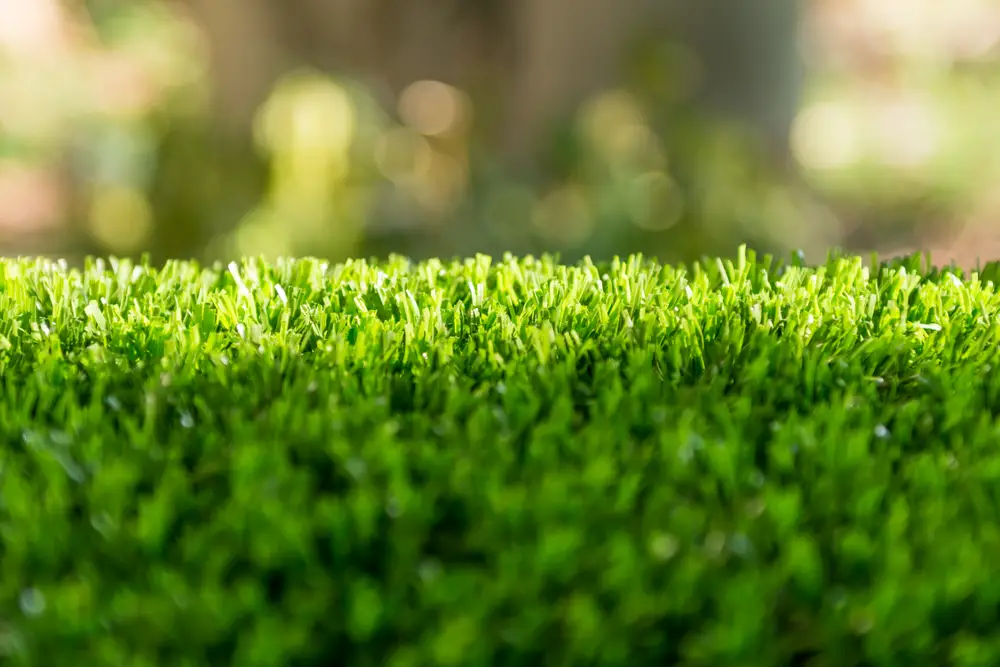
Artificial grass maintains a consistent appearance with far more ease than natural grass. Not only does artificial grass’s color not fade, but it also maintains a well-manicured look and proper shape without brown patches or damage in high foot traffic areas.
This is true regardless of the season.
While natural grass may not fare as well on sports fields, landscapers use it to create visually appealing lawns and features. This is not possible with artificial grass.
Environmental Impact
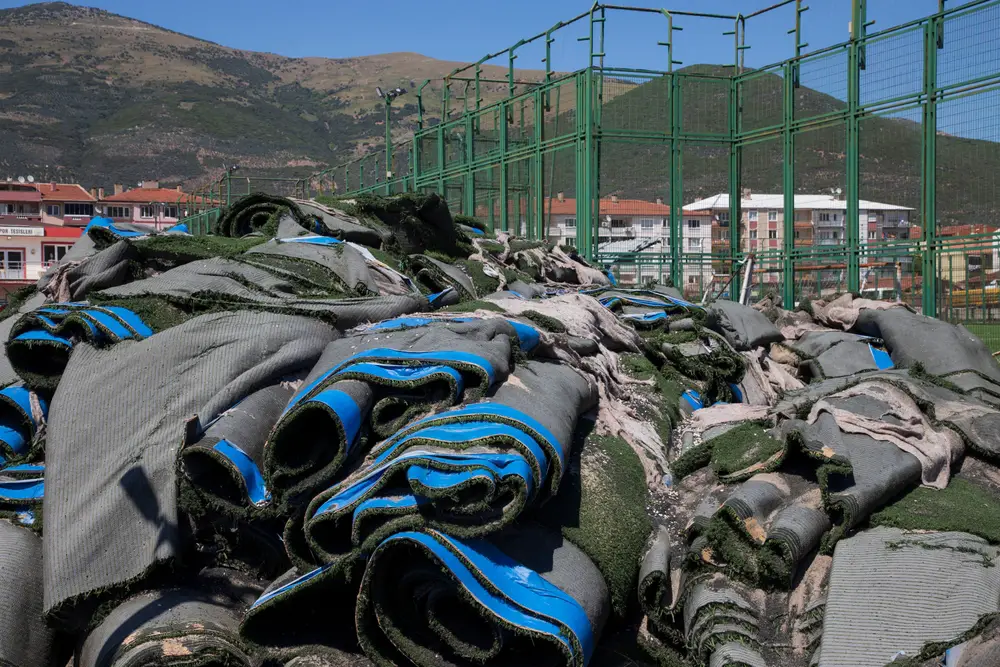
Artificial grass’s environmental impact is far more significant than natural grass’s since artificial grass is made from petroleum products. Polyethylene and polypropylene are manufactured materials that require extracting and processing fossil fuels. This takes those materials away from other uses and requires additional resources.
In addition, artificial grass areas are essentially dead areas since they produce no oxygen. Plants and flowers will not grow, and wildlife will not thrive there.
One bonus in artificial grass’s favor is that you can recycle it. However, this doesn’t extend to all parts of artificial grass. Also, tons of artificial grass are making their way to landfills, and it can take the products in artificial grass anywhere between 20-30 and 450 years to degrade.
Natural grass contributes to a healthier environment by producing oxygen, absorbing carbon dioxide, and providing a home for various organisms and wildlife.
However, artificial grass is becoming more environmentally friendly with the introduction of biodegradable soybean oil and walnut husk products.
Injury Possibility
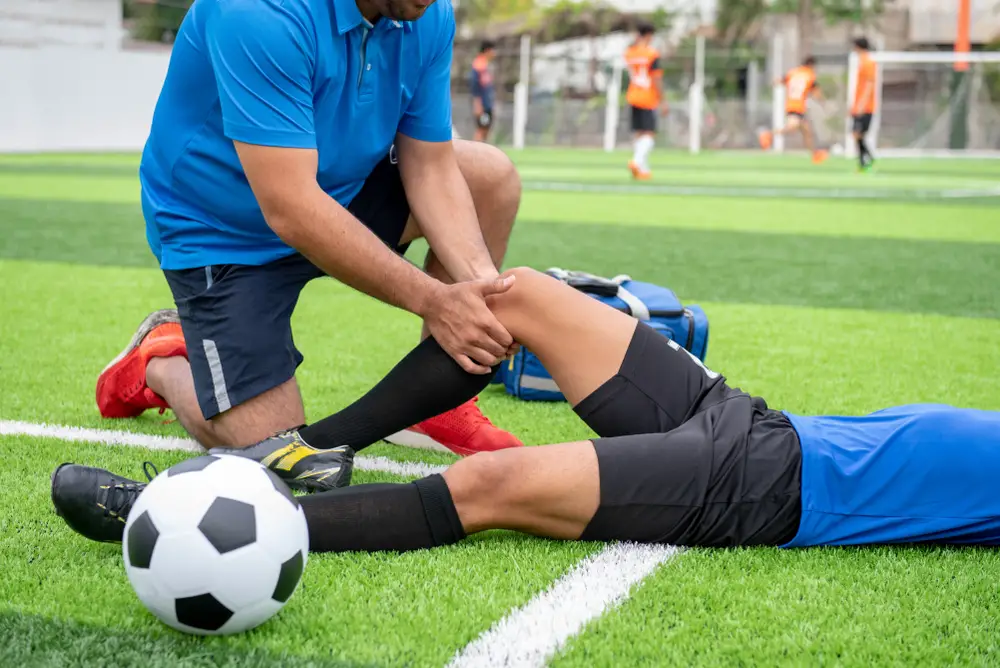
Overall, ankle, knee, and hip injuries are more severe and more prevalent when athletes play on artificial grass fields.
Knee and hip injuries were similar between the two types of playing surfaces.
Final Thoughts
I have found that artificial grass is more durable and requires less maintenance than natural grass. On the other hand, natural grass provides a safer surface to play on and supports a natural ecosystem that attracts abundant wildlife.
Financial factors will play a significant part in the debate on artificial grass vs natural grass. Still, one’s personal preferences and the specific needs of each project will dictate which option provides the best solution.
